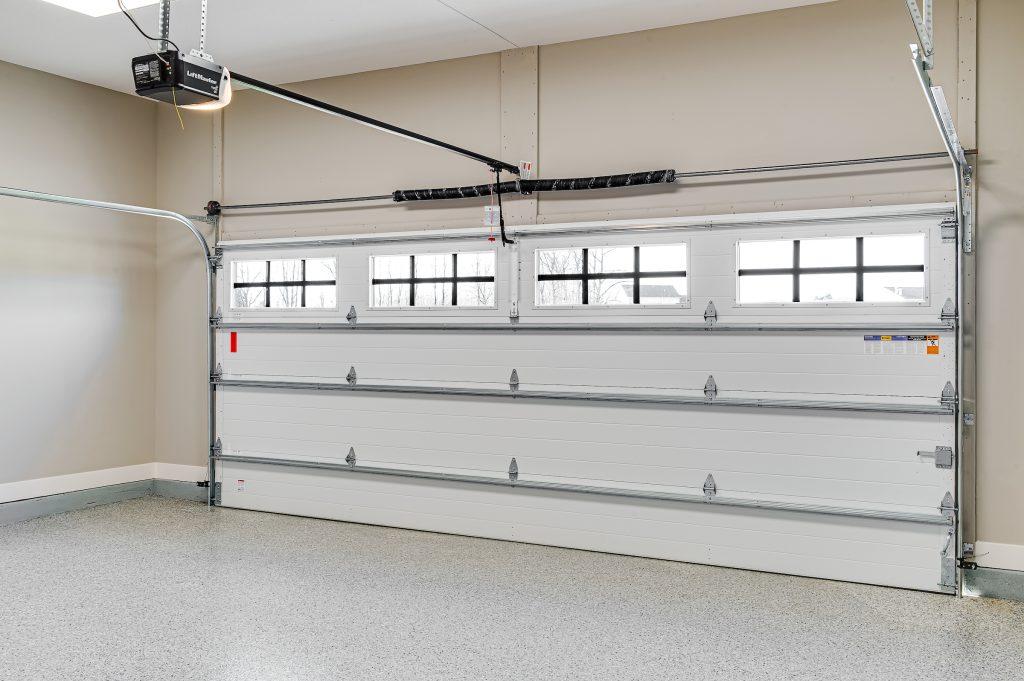Your garage door serves as a crucial entry point to your home, and when it has a broken spring, it can lead to a significant inconvenience. A broken spring can render your garage door immovable, making it challenging to access your garage. In this article, we’ll explore how to safely open a garage door when you’re faced with a broken spring situation.

Understanding Garage Door Springs
1. The Role of Springs
Garage door springs play a pivotal role in the door’s operation. They counterbalance the weight of the door, making it easy to lift manually or with the assistance of a garage door opener. There are two main types of springs commonly used in garage doors:
- Torsion Springs: These are typically mounted horizontally above the door. When they unwind, they create the torque necessary to lift the door.
- Extension Springs: These springs are usually installed on both sides of the door and extend when the door is in motion. They provide the lifting force required.
2. Signs of a Broken Spring
A broken garage door spring can exhibit several telltale signs:
- A loud snapping or popping noise when the spring breaks.
- The garage door suddenly feels much heavier when attempting to lift it manually.
- The door may be stuck in a partially open or closed position.
- There is a noticeable gap or separation in the spring itself.
Opening Your Garage Door Safely With a Broken Spring
1. Disconnect the Opener
The first step is to disconnect your garage door opener from the door itself. You can do this by pulling on the release cord or lever, which is typically located on the opener’s track. This disengages the opener from the door, allowing you to manually open and close it.
2. Use Caution and Assistance*
Lifting a garage door with a broken spring can be challenging because the door’s weight is no longer counterbalanced. It’s crucial to exercise caution and ask for assistance if needed. Never attempt to lift the door on your own if it feels too heavy.
3. Lift the Door*
Position yourself on the inside of the garage, grasp the door handle or bottom edge, and carefully lift the door. Use your legs, not your back, to provide the lifting force. If the door feels too heavy or difficult to lift, do not force it.
4. Secure the Door*
Once the garage door is fully open, you need to secure it in place to prevent accidental closure. Use locking pliers or vice grips to clamp onto the tracks on either side of the door. This will prevent the door from sliding back down.
Seek Professional Repair
While manually opening a garage door with a broken spring is possible, it is not a permanent solution. Garage door springs are under extreme tension and can be dangerous to work with. Therefore, it’s essential to seek professional repair and spring replacement as soon as possible.
Preventing Future Spring Breakage
To minimize the risk of future spring breakage, consider the following preventive measures:
- Regular Maintenance: Schedule annual or bi-annual maintenance checks with a professional technician to inspect and lubricate your garage door springs.
- Replace Both Springs: If one spring breaks, it’s advisable to replace both springs, even if the other one appears to be in good condition. This ensures balanced tension and prolongs the lifespan of the springs.
- Invest in High-Quality Springs: When you replace springs, choose high-quality ones designed to last longer and withstand wear and tear.
Conclusion
Dealing with a broken garage door spring can be challenging, but with the right knowledge and precautions, you can safely open your garage door and seek professional repair. Remember to use caution, seek assistance if needed, and prioritize your safety when dealing with garage door springs. Regular maintenance and proactive measures can also help prevent future spring breakage, ensuring the continued smooth operation of your garage door.



Leave a Reply